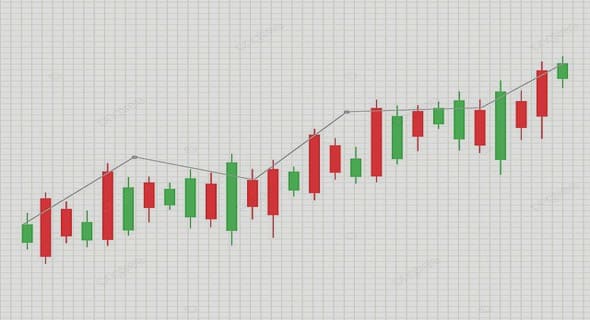(Downloads - 0)
For more info about our services contact : help@bestpfe.com
Table of contents
I CONCEPTS OF ULTRACOLD MATTER THEORY
1 Bose-EinsteincondensationinidealBosegases
1.1 What is a Bose-Einstein condensate?
1.2 What is quantum ergodicity?
1.3 Original prediction of Bose-Einstein condensation
1.4 Experimental state-of-the-art
1.5 Bose-Einstein condensation in harmonic traps
1.5.1 Grand canonical ensemble
1.5.2 The canonical ensemble
1.6 Bose-Einstein condensation in position space
2 InteractingBose-Einsteincondensates
2.1 S-wave scattering approximation
2.2 Hamiltonian for two body interactions
2.3 Gross-Pitaevskii equation from the Hartree ansatz
2.4 Theories of condensate growth
2.4.1 Condensate growth from quantum Boltzmann equation
2.4.2 Pioneering works of Levich and Yakhot
2.4.3 Predictions of Kagan, Svistunov and Shlyapnikov
2.4.4 Kinetic evolution obtained from Holland, Williams and Cooper
2.4.5 Stoof’s contribution
2.4.6 Quantum kinetic theory
Survey: Which current aspects can we adopt to monitor the many body dynamics durin
Bose-Einstein condensation?
II QUANTUM MASTER EQUATION OF BOSE-EINSTEIN CONDENSATION
3 Concepts,basicassumptionsandvalidityrange
3.1 Motivation for master equation: Separation of time scales
3.2 Modeling of many particle dynamics
3.2.1 Two body interactions in dilute gases
3.2.2 Condensate and non-condensate subsystems
3.2.3 Thermalization in the non-condensate
3.3 N-body Born-Markov ansatz
3.3.1 General Born-Markov ansatz
3.3.2 Born ansatz for gases of fixed particle number
3.3.3 Markov approximation for a Bose-Einstein condensate
3.4 Limiting cases and validity range
3.4.1 Dilute gas condition
3.4.2 Perturbative limit
3.4.3 Thermodynamic limit
3.4.4 Semiclassical limit
3.4.5 Physical realization of limiting cases
4 Quantizedfields,twobodyinteractionsandHilbertspace
4.1 Definition of the condensate
4.2 Interactions between condensate and non-condensate
4.2.1 Separation of the second quantized field
4.2.2 Decomposition of the Hamiltonian
4.2.3 Two body interaction processes
4.3 Hamiltonian of the non-condensate background gas
4.3.1 Diagonalization of the non-condensate Hamiltonian
4.3.2 Perturbative spectrum of non-condensate particles
4.4 Hilbert spaces
4.4.1 Single particle Hilbert space
4.4.2 Fock-Hilbert space
4.4.3 Fock-Hilbert space of states with fixed particle number
5 LindbladmasterequationforaBose-Einsteincondensate
5.1 Evolution equation of the total density matrix
5.2 Time evolution of the reduced condensate density matrix
5.2.1 N-body Born ansatz
5.2.2 Evolution equation for the condensate
5.3 Contribution of first order interaction terms
5.3.1 General operator averages in the Bose state
5.3.2 Vanishing of linear interaction terms
5.4 Dynamical separation of two body interaction terms
5.5 Lindblad operators and transition rates
5.5.1 Lindblad evolution term for single particle processes (!)
5.5.2 Lindblad evolution term for pair processes (« )
5.5.3 Evolution term for scattering processes (#)
5.6 Quantum master equation of Lindblad type
III Environment-induced dynamics in Bose-Einstein condensates
6 MonitoringtheBose-Einsteinphasetransition
6.1 Dynamical equations for Bose-Einstein condensation
6.1.1 Master equation of Bose-Einstein condensation
6.1.2 Growth equations for average condensate occupation
6.1.3 Condensate particle number fluctuations
6.2 Bose-Einstein condensation in harmonic traps
6.2.1 Monitoring of the condensate number distribution
6.2.2 Dynamics of the condensate number variance
6.2.3 Average condensate growth from the thermal cloud
6.3 Comparison of formation times to state-of-the-art
6.4 Modified condensate growth equation
7 TransitonratesforBose-Einsteincondensation
7.1 Single particle (!), pair (« ) and scattering (#) rates
7.1.1 Single particle feeding and loss rate
7.1.2 Pair feeding and loss rates
7.1.3 Two body scattering rates
7.2 Depletion of the non-condensate
7.3 Detailed particle balance conditions
7.4 Single particle, pair and scattering energy shifts
7.5 Transition rates and energy shifts in the perturbative limit
7.5.1 Leading order of transition rates
7.5.2 Leading order energy shifts
7.6 Generalized Einstein de Broglie condition
8 EquilibriumpropertiesofadiluteBose-Einsteincondensate
8.1 Equilibrium steady state after Bose-Einstein condensation
8.2 On the quantum ergodicity conjecture
8.3 Exact condensate statistics versus semiclassical limit
8.3.1 Condensate particle number distribution
8.3.2 Average condensate occupation and number variance
8.3.3 Shift of the critical temperature
8.4 Analytical scaling behaviors in the semiclassical limit
8.4.1 Condensate and non-condensate particle number distribution
8.4.2 Average condensate occupation and number variance
8.4.3 Higher order moments of the steady state distribution
9 Finalconclusions
9.1 Master equation of Bose-Einstein condensation
9.2 What is Bose-Einstein condensation?
9.3 Outlook
Appendix
A Importantproofsandcalculations
A.1 Correlation functions of the non-condensate field
A.2 Detailed balance conditions
A.3 Occupation numbers of the non-condensate
A.4 Proof of uniqueness of the Bose gas’ steady state
A.5 Non-condensate thermalization
Bibliography




